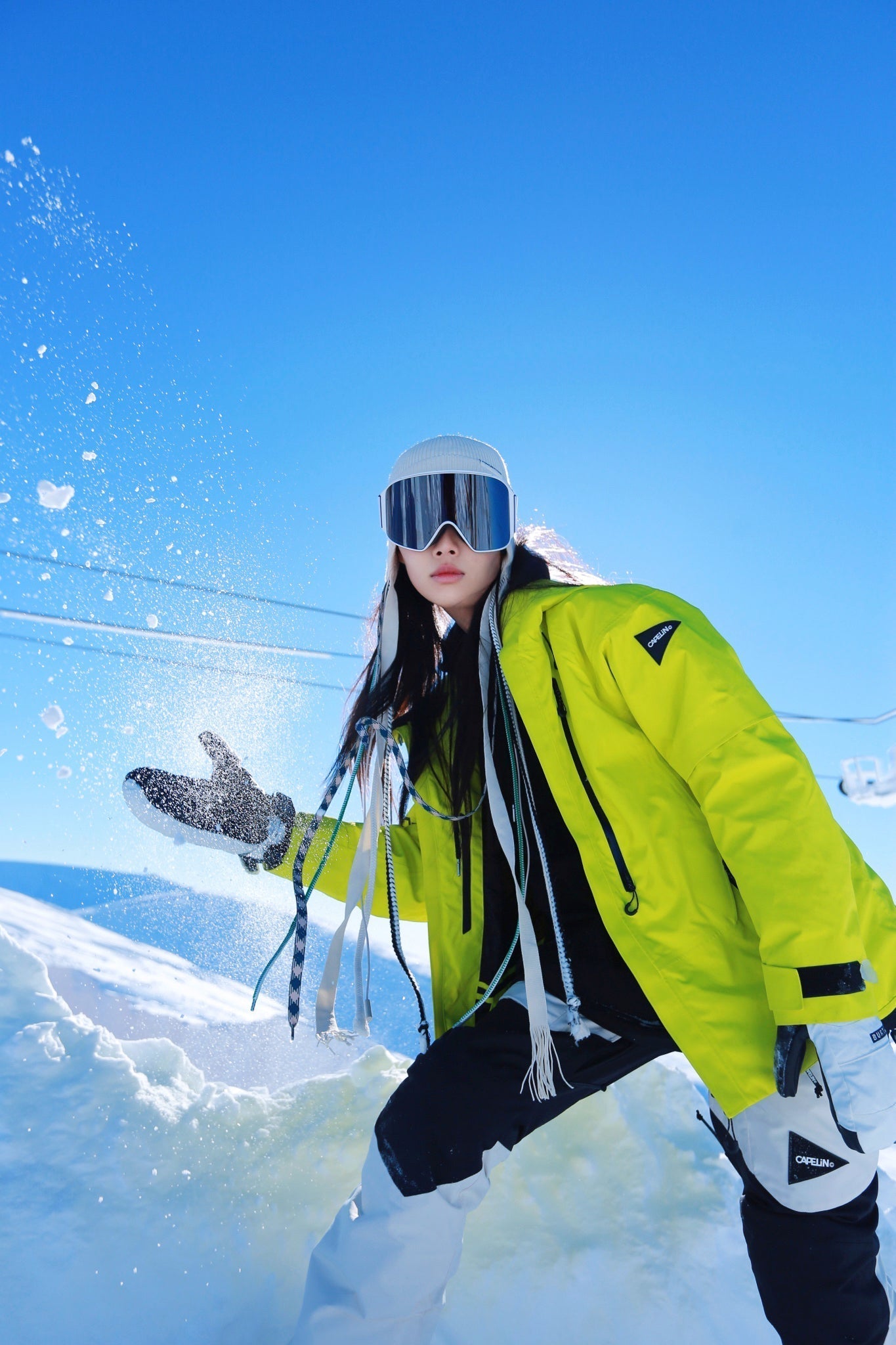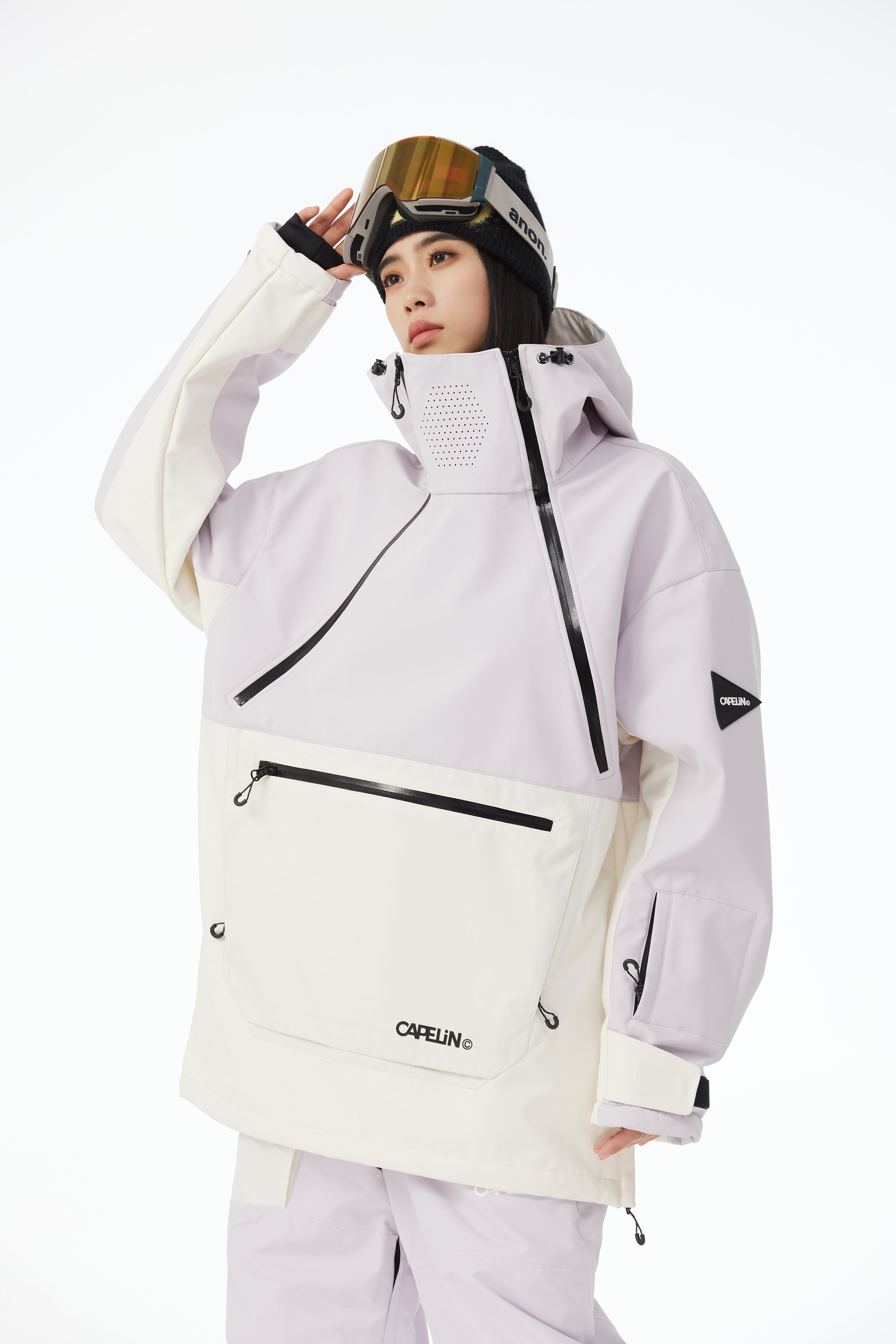When you're gearing up to shred the slopes, choosing the right mid and base layers is just as important as having a quality Capelin Crew snowboard jacket. What you wear underneath provides the foundational warmth and moisture management to keep you comfortable and performing at your peak all day.
In this guide, I'll break down the ideal layering system for snowboarding and explain the key materials and features to look for in base layers and insulating mid-layers. We'll cover awesome merino wool and synthetic fabric options that wick away sweat while trapping body heat.
Forget shivering through bone-chilling lift rides or overheating until your jacket's drenched - with the right winterized base layers under your shell, you'll stay dry, warm, and focused on nailing that next method. Let's get layered up!
Base Layers
Moisture Management
The foundation of any good snowboard layering system starts with a high-quality base layer next to your skin. These thin, stretchy garments play a crucial role in regulating body temperature and managing moisture.
As you work up a sweat riding, merino wool or synthetic base layers effectively wick that moisture away from your body. This transfer helps the sweat evaporate instead of getting trapped against your skin where it can chill you rapidly.
Comfort
In addition to keeping you drier, base layers provide a smooth, low-friction layer against your body that enhances overall comfort. The soft, stretchy fabrics move with you instead of chafing or binding.
Choosing the Right Base Layers
Materials
When selecting base layers, pay close attention to the fabric technologies and construction. You'll want something that provides excellent moisture-wicking performance to stay dry.
Merino wool is a popular natural option, offering breathable warmth even when wet. Or look for synthetic blends that incorporate moisture-transferring fibers like polyester or nylon.
Avoid cotton at all costs, as it soaks up sweat and will leave you cold and clammy.
Fit
To work effectively as a vapor-transferring layer, your base layers need to fit snugly against your body without excessive bagginess or loose fabric. This streamlined fit maximizes wicking by preventing sweat from getting trapped in folds or pockets.
Look for articulated knees and torso gussets that enable freedom of movement. And make sure to get the proper length in tops and bottoms so there's no riding up as you twist and bend.
Types of Base Layers
Long Sleeves
For maximum coverage and warmth in really cold conditions, long-sleeved base layer tops are the way to go. They eliminate any gaps between your jacket sleeves and base layer bottoms where cold air can sneak in.
The full arm and torso coverage helps lock in your body's heat envelope. Plus, the sleeves extend protection over the backs of your hands when layered under gloves or mittens.
Short Sleeves
If you tend to run a little hot or are riding in milder winter temps, short-sleeved base layers provide added ventilation and flexibility. You'll get the same moisture management through the torso while avoiding potential overheating from full arm coverage.
Base Layer Sets
Thermal Long Underwear
For balanced all-over warmth and breathability, thermal underwear "doubles" make an excellent quality base layer system. You get the full coverage of snug, stretchy tops and bottoms designed to thermally regulate together.
Many thermal underwear pieces incorporate mesh ventilation zones, flat seam construction, and contoured articulation to maximize both warmth and mobility without restriction.
Long Johns
If money is a bit tighter, a good pair of basic long-john bottoms can be an affordable base layer option, especially if you already have suitable tops. Look for longer inseam sizes to avoid riding up as you move.
While not as dialed as performance thermals, quality long-john fabric will still provide solid insulation and wicking to keep your legs and core warm and dry under your snow pants and jacket.
Mid-Layers
Insulation
While base layers manage moisture, a good insulating mid layer is what really helps trap and retain your body's heat under that outer snowboard shell. This middle layer creates a vital warm air pocket around your core.
Whether it's lightweight fleece, thick wool sweaters, or lofty down or synthetic fill, mid layers provide the critical insulation needed to stay toasty even when temperatures plummet.
Breathability
At the same time, mid layers need to allow a degree of breathability and air circulation. As you work up a sweat riding, any built-up moisture and vapor needs a path to escape.
Non-breathable insulation will cause overheating and condensation that defeats the whole layering purpose. Quality mid layers facilitate this air exchange to regulate temperatures.
Choosing the Right Mid-Layers
Materials
There are many excellent insulating fabrics to choose from in the mid layer category. Lightweight fleece provides fine-tuned, breathable warmth. Merino wool adds temp regulation and antimicrobial properties.
For ultimate lightweight heat, down and synthetic fills pack maximum insulation with minimum bulk. Choose based on your insulation needs and activity levels.
Fit
In addition to insulating properties, mid layer tops and jackets should have an athletic cut that permits uninhibited movement without excess bagginess. Articulated elbows, two-way stretch, and longer hem lengths all enhance mobility.
Types of Mid-Layers
Fleece Jackets
For its versatility and breathability across a range of conditions, you can't go wrong with a classic fleece jacket or pullover mid layer. Fleece provides warmth without excessive heat buildup.
Look for features like high-loft gridded fleece for more insulation power or windproof membranes for added protection. Thumb loops and zippered pockets also boost functionality.
Down Jackets
When unsurpassed warmth-to-weight ratio is the priority, a quality down jacket makes an unbeatable insulating mid layer for the coldest days. These lofty beauties can be decked with hydrophobic down for weather protection.
Baffled constructions with zoned insulation levels let you customize heating zones while articulated mobility lets you ride unimpeded. And some are even packable for easy storing.
Mid-Layer Sets
Hoody Mid-Layers
For added warmth and coverage, a zip-up hoody style mid layer enables better heat retention around your neck and face. Just zip it up over your base layers and you've got a full-torso furnace to trap body heat.
Thumb loops and hand gaiters provide even more draft protection, making hoody mid layers ideal frozen riding sessions.
Packable Down Jackets
Another great option is an ultralight, highly packable down mid layer that can stuff down into its own pocket or sack. These allow you to bring "put-on" insulation anywhere and versatility adjust your layering system.
Perfect for surviving those bitter lift rides or tossing in your pack on long tours. Many feature water-resistant down and fabrics for poor weather use.












